White Flowers for the Southwest Landscape: Part 2
Exploring White Flowers in the Garden
Gardeners have been well aware of the enduring allure of white flowers and white flowering plants and the exquisite beauty they bestow upon the garden. For generations, the pristine purity and timeless elegance of white blossoms have captivated horticultural enthusiasts.
These flowers serve as a symbol of purity and grace, enhancing the visual appeal of any landscape. With their ability to seamlessly complement a wide range of colors and architectural elements, white flowers have earned their place as timeless classics in the world of gardening.
The Beauty of White Flowers
Gardeners have long known about white flowers plants and the beauty that they bring to the garden.
The color white is seen by many as a bright, clean color that makes surrounding colors ‘pop’ visually. Others like how white flowers seem to glow in the evening and early morning hours in the landscape.
Part 2: A List of White Flowering Plants for the Southwestern Landscape
Thankfully, there are several white flowering plants that do very well in the Southwestern landscape. In Part 1, I showed you four of my favorites, which you can view here.
Today, let’s continue on our white, floral journey…
Disclosure: Some of the links below are affiliate links, meaning, at no additional cost to you, I may earn a commission if you click through and make a purchase.
White Evening Primrose (Oenothera caespitosa)
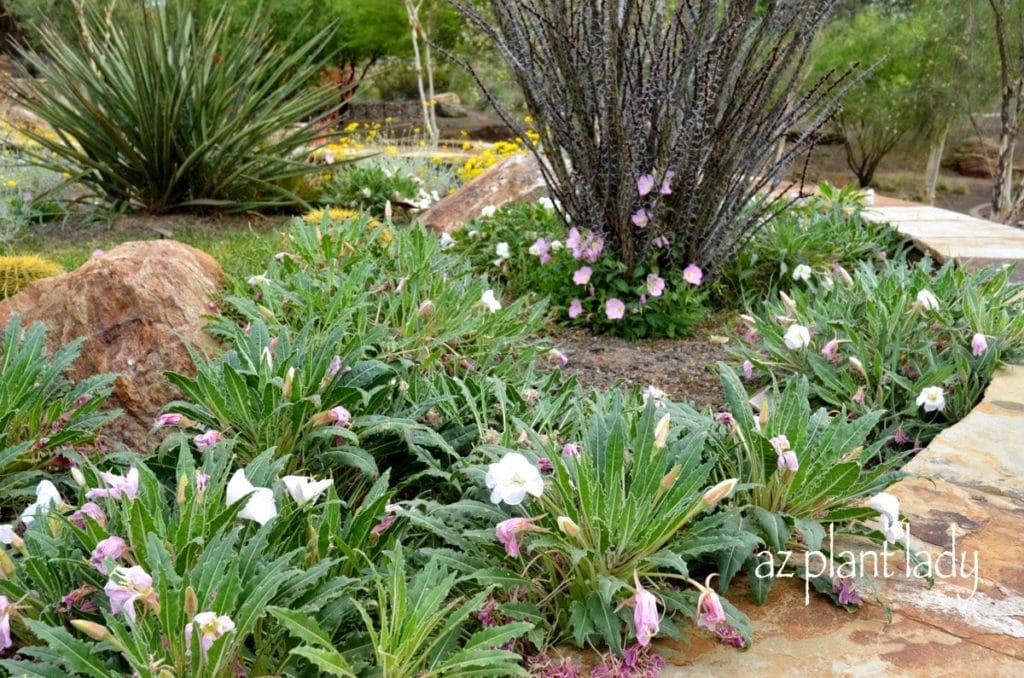
White Evening Primrose (Oenothera caespitosa)
The arrival of spring transforms the low-growing green foliage of White Evening Primrose with the appearance of beautiful white flowers. What makes these flowers somewhat unique is that as the flowers fade, they turn pink.
White Evening Primrose looks best when used in a landscape with a ‘natural’ theme or among wildflowers.
The flowers appear in spring and summer on 10″ high foliage. Hardy to zone 8 gardens, this small perennial is native to Southwestern deserts.
White Globe Mallow (Sphaeralcea ambigua ‘White’)
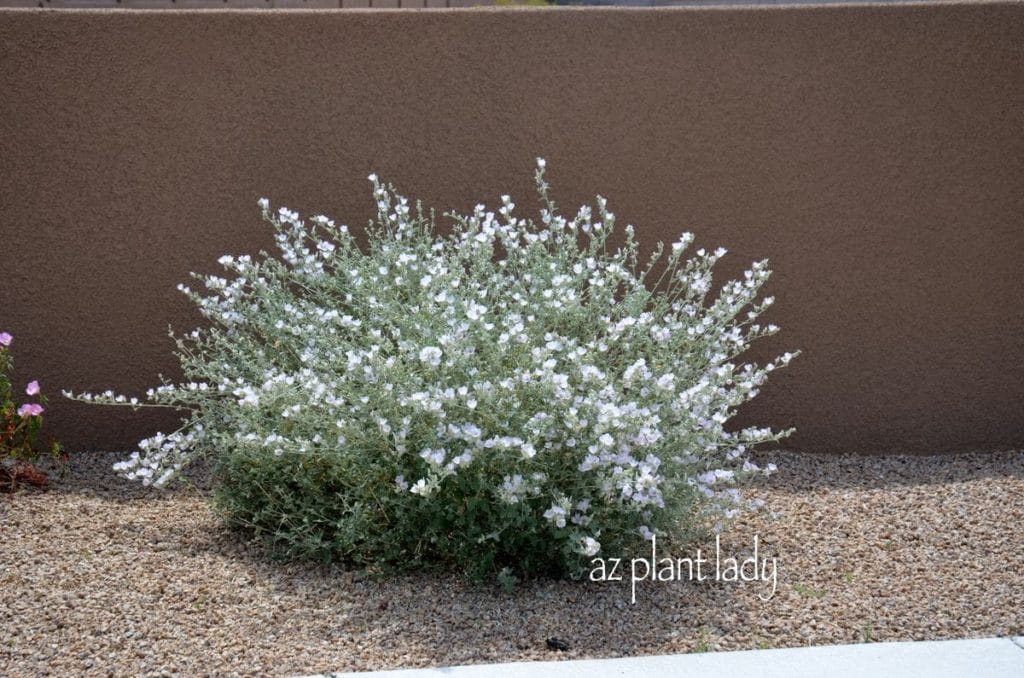
Beautiful White Globe Mallow (Sphaeralcea ambigua ‘White’)
This is a shrubby perennial that is in my own landscape. While the most common color of Globe Mallow is orange, it does come in a variety of other colors including red, pink and white – all of which I have.
The white form of Globe Mallow shares the same characteristics of the orange one – it thrives in full sun and can even handle hot, reflected sun. The foliage is gray and looks best when cut back to 1 ft. high and wide after flowering in spring.
I pair white Globe Mallow alongside my pink ones for a unique, desert cottage garden look.
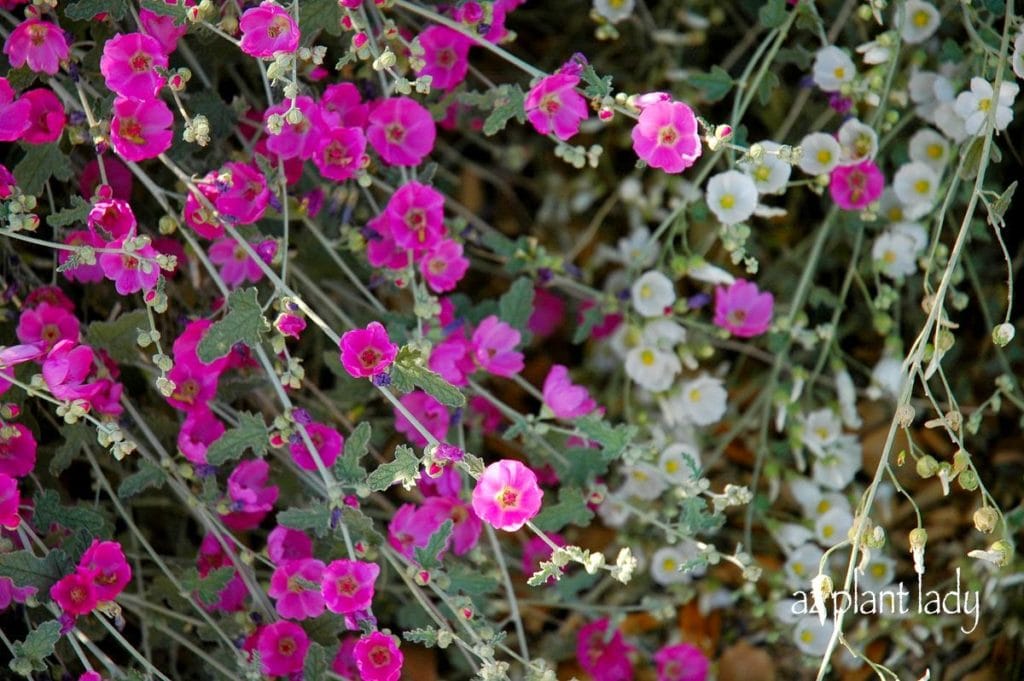
See what I mean about white flowers helping other colors to stand out visually?
Hardy to zone 6, Globe Mallow grows to 3 ft. tall and wide. It does best in full sun and well-drained soil.
To learn more about this beautiful desert native, click here.
Blackfoot Daisy (Melampodium leucanthum)
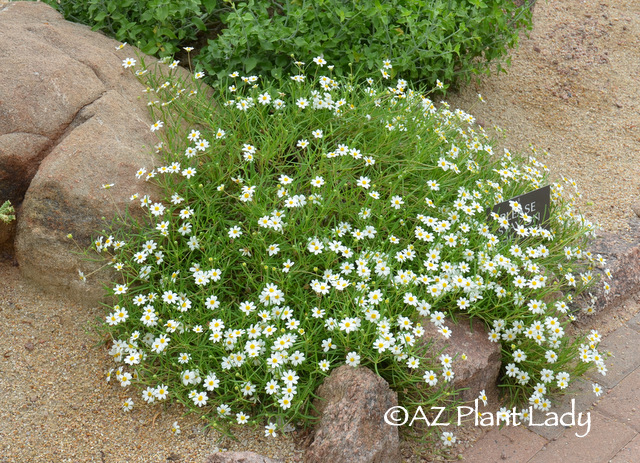
The white Blackfoot Daisy (Melampodium leucanthum)
The quaint Blackfoot Daisy is another perennial that looks great in a natural desert-themed landscape. This ground cover produces sunny, white daisies in spring and fall in desert climates – it flowers during the summer in cooler locations.
Hardy to zone 5, Blackfoot Daisy can handle extreme cold when planted in full sun. I like to plant it near boulders where it can grow around the base for a nicely designed touch. It grows to 1 ft. high and 24 inches wide.
I have several in my front garden and I love their beauty and low-maintenance. They need very little maintenance other than light pruning with my Felco Hand Pruners in late spring to remove dead growth.
Little Leaf Cordia (Cordia parvifolia)
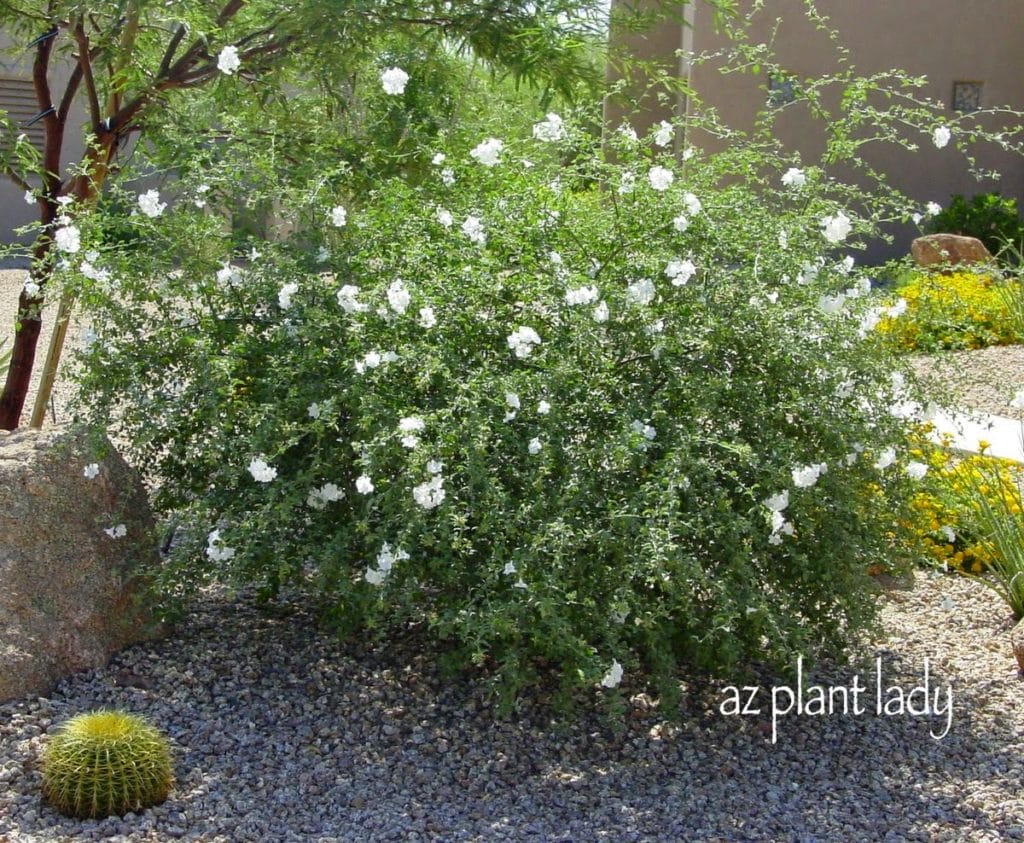
Green shrub and white flower Little Leaf Cordia (Cordia parvifolia)
This white flowering shrub is not used often enough in the Southwestern landscape in my opinion. It has beautiful flowers, needs little pruning if given enough room to grow, is extremely drought tolerant and evergreen.
Little leaf cordia can grow 4 – 8 ft. tall and up to 10 ft. wide. Unfortunately, some people don’t allow enough room for it to grow and shear it into a ‘ball’.
You can go 2 – 3 years or more between prunings. It’s best when left alone to bear its attractive, papery white flowers spring into fall.
Hardy to zone 8, little leaf cordia does great in full sun and well-drained soil.
‘White Katie’ Ruellia (Ruellia brittoniana ‘White Katie’)
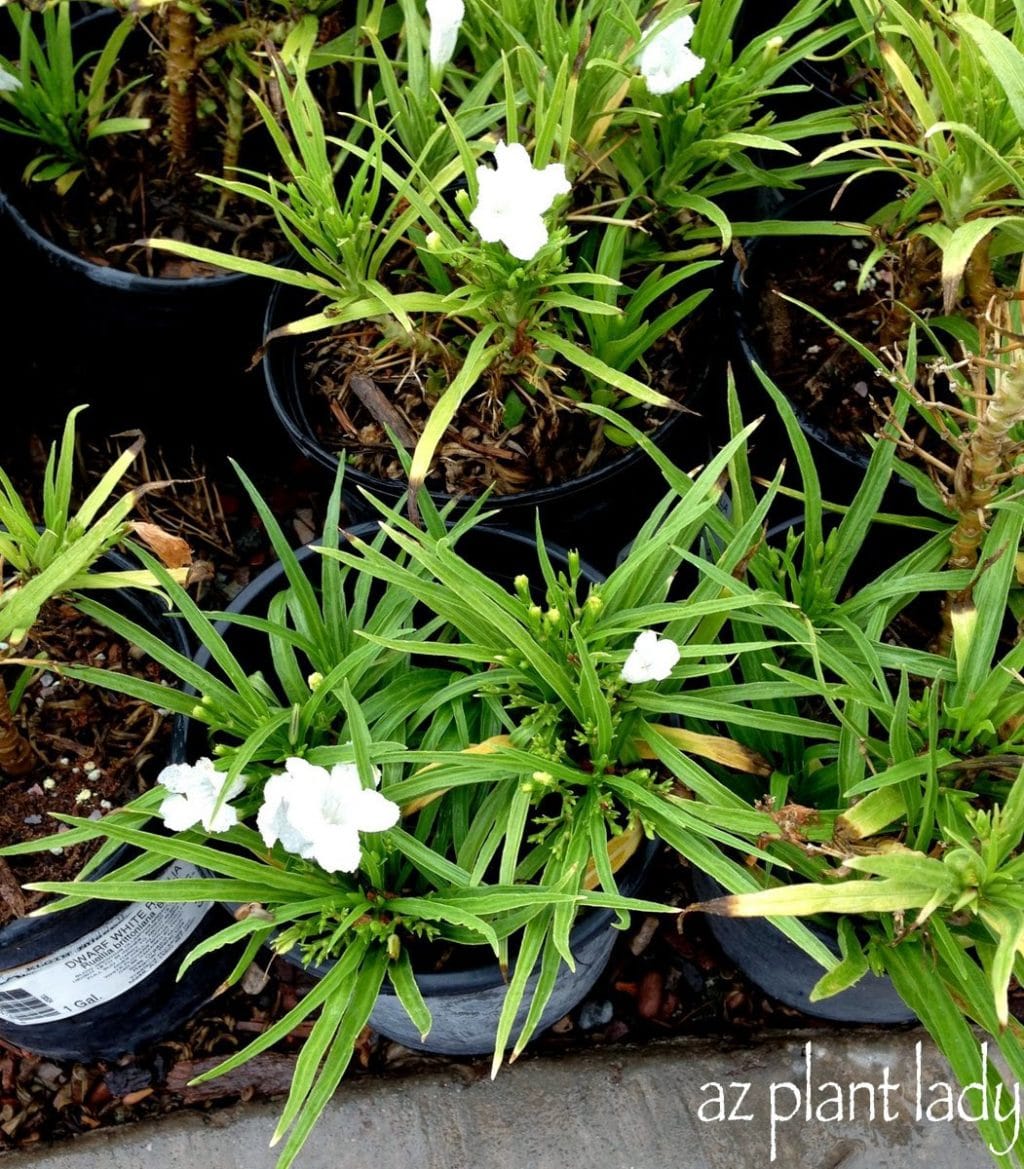
Strappy leaved ‘White Katie’ Ruellia (Ruellia brittoniana ‘White Katie’)
During a visit to a nursery some time ago, I noticed a white flowering variety of the more commonplace purple ‘Katie’ ruellia and I immediately decided that I liked the white color better.
‘White Katie’ ruellia grows to 8 inches tall and 1 1/2 ft. wide in zone 8 gardens and warmer. It looks great when planted in groups of 3 or more. You can plant it alongside the purple variety for fun color contrast. It does suffer frost damage when temps dip below freezing but recover quickly in spring.
This white flowering perennial does best in morning sun or filtered shade in desert gardens.
I hope you have enjoyed these white flowering plants and decide to add them to your garden!

 Noelle Johnson, aka, 'AZ Plant Lady' is a author, horticulturist, and landscape consultant who helps people learn how to create, grow, and maintain beautiful desert gardens that thrive in a hot, dry climate. She does this through her consulting services, her online class Desert Gardening 101, and her monthly membership club, Through the Garden Gate. As she likes to tell desert-dwellers, "Gardening in the desert isn't hard, but it is different."
Noelle Johnson, aka, 'AZ Plant Lady' is a author, horticulturist, and landscape consultant who helps people learn how to create, grow, and maintain beautiful desert gardens that thrive in a hot, dry climate. She does this through her consulting services, her online class Desert Gardening 101, and her monthly membership club, Through the Garden Gate. As she likes to tell desert-dwellers, "Gardening in the desert isn't hard, but it is different."
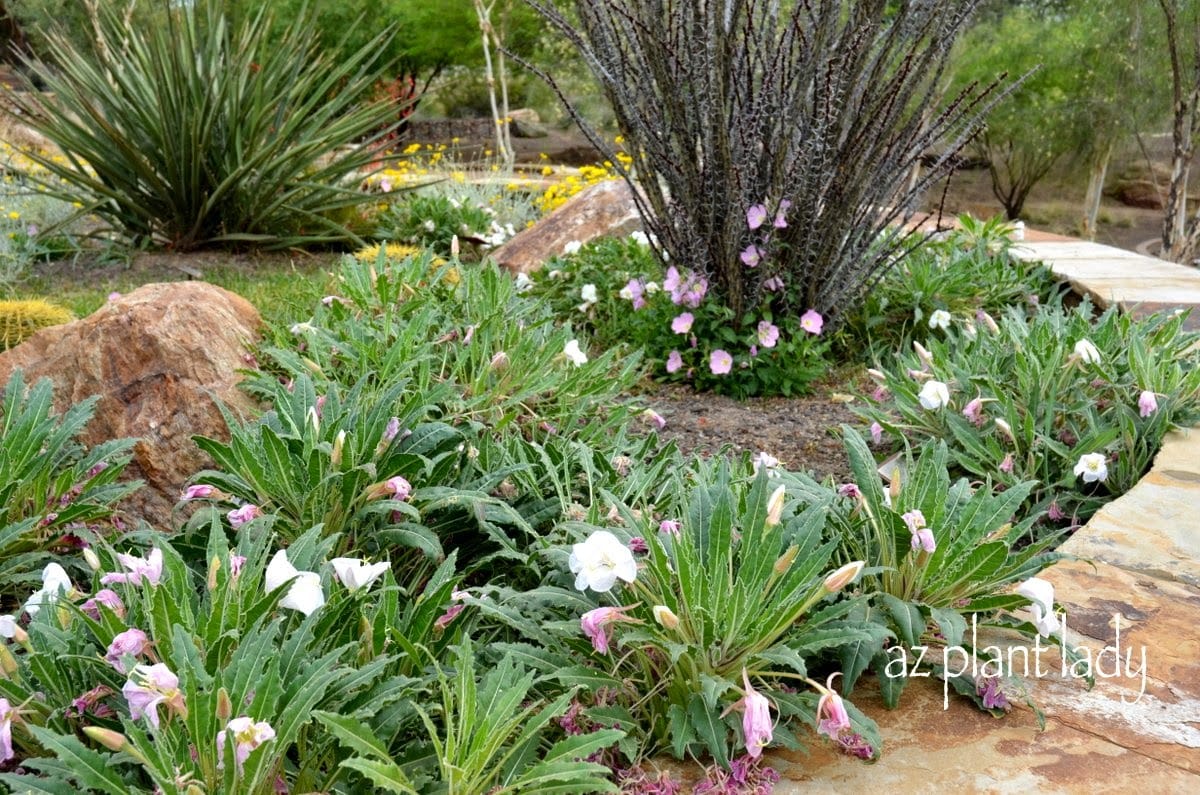
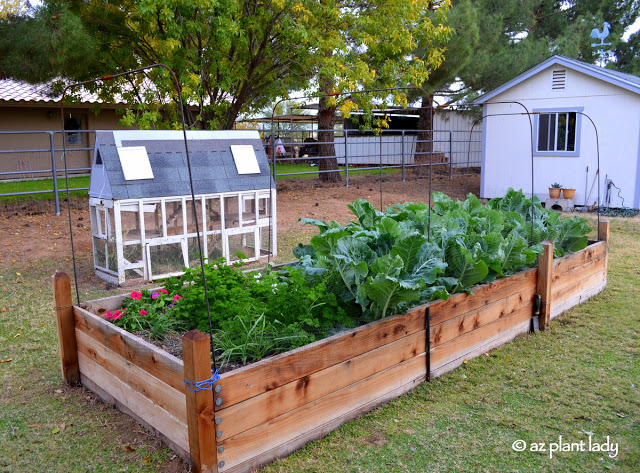
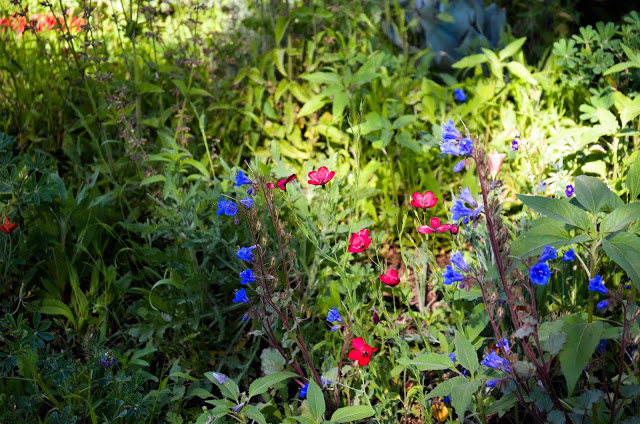


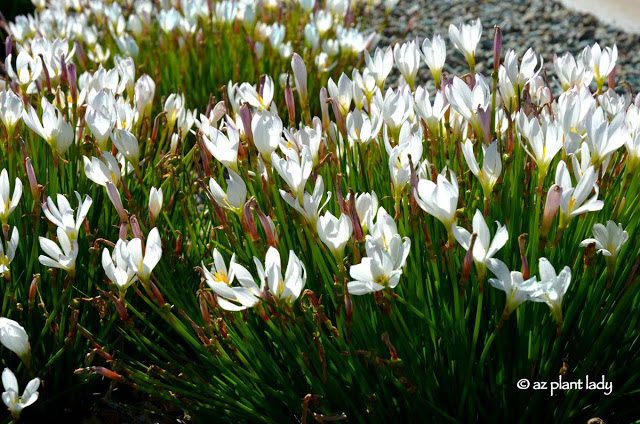
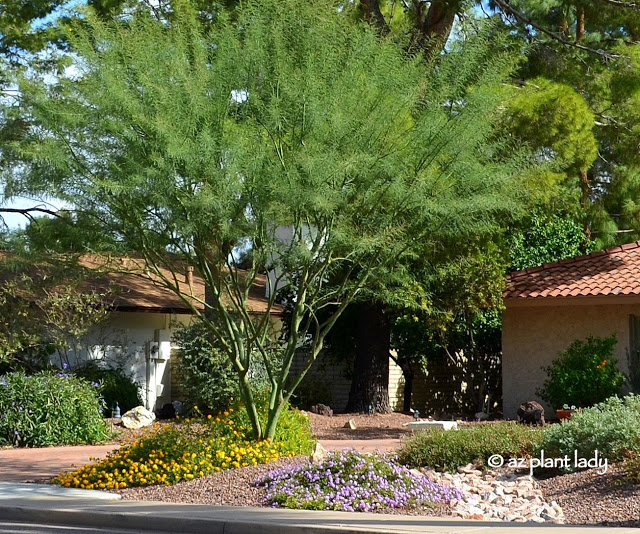






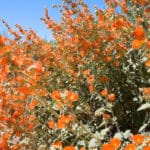

Does Melampodium leucanthum grow as easily and reseed as the Yellow Melampodium? I only grow the yellow and could use white if it has the same habits.
Hi Jean,
That is a great question. I've read that it does reseed readily – however, that doesn't happen much in the dry Southwest, but probably would where you live 🙂
Noelle
White Globemallow…gotta find that one! The Cordia I was happy to find survived the warmer parts of El Paso, so I'll have to use it… anything to cover lots of ground works for me.
Your O. deltoidea and other white Oenothera are favorites, even though just spring here. I remember the annual O. pallida in the foothills where I used to recreate, and late March to early May it was often white ruffles of flowers littered throughout the dormant grasses.
As always, it is a joy reading through your blog and most especially seeing the photos. As I have said in the past – I love the Southwest and the plants there. Now with the cold and snow coming here – I get the urge to travel your way. Jack
My son took a photo in the arizona desert in about 2005, and I am now painting the flower and wish to know what it is. It is more or less globe shaped, white, each inflorescence has five long narrow petals with a brown stripe down the middle and a long filament extending from the tip. It might be allium or lillium family but can not find it on the 'net. Photo won't post here.
Hello 'Fishy',
I'm sorry, but from your description, I can't think of what the flower is. I was thinking that it could be a rain lily, except they don't have a brown stripe.
I hope you are able to find out what it is.
Noelle